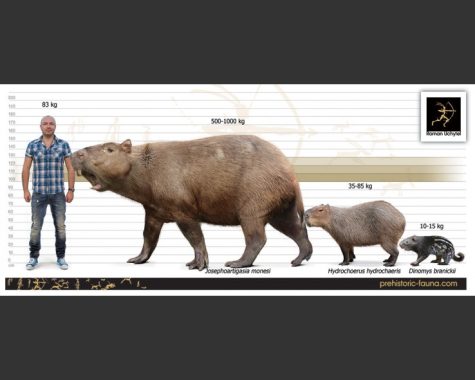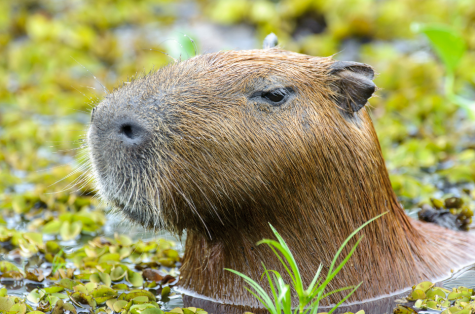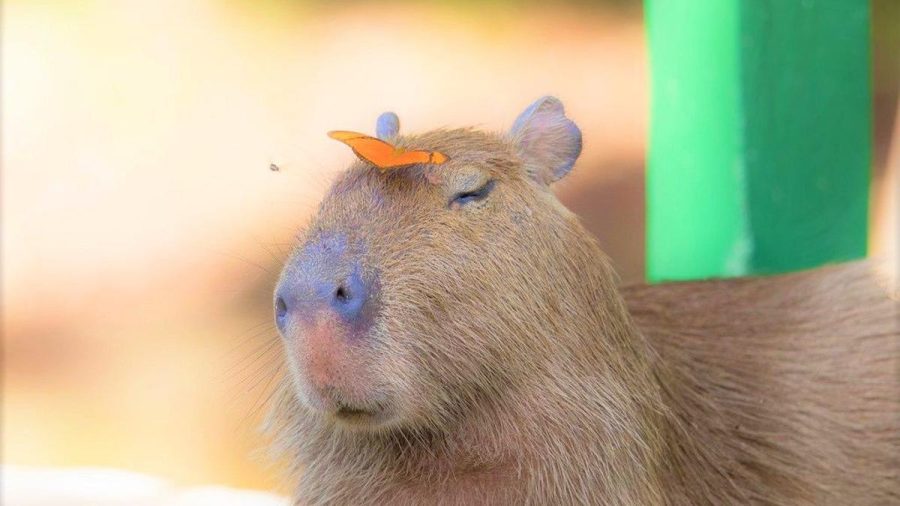Is It a Pig? Is It a Dog? No, It’s a Capybara!
Size
The Capybara, or the Hydrochoerus hydrochaeris, is a rodent. In fact, it is the current largest rodent on Earth. A healthy Capybara weighs 91.2 kg (201 lb). Female Capybaras tend to weigh more than male Capybaras. The second largest rodent is the Beaver, which usually weighs about 50 kg (110 lb). The Capybara is almost two times the size of a beaver. There are two species of this rodent, the Capybara, and the Lesser Capybara (Hydrochoerus isthmius), which weighs about 45.4 kg (100 lb). The largest rodent ever known to walk the earth is the Josephoartigasia monesi, which is extinct, and is said to have weighed around 900 kg (2,000 lb). Capybaras are said to be descendants of this animal. Their size might be scary, but don’t worry. They are known as one of the friendliest animals in the world.

Diet
Capybaras are herbivores. They focus on grasses, the vegetation that lines water sources, and other aquatic plants. They also enjoy fruit and tree bark. An adult Capybara can eat up to 6 to 8 pounds of grass a day. Believe it or not, they actually eat their own poop. They eat it for the beneficial bacterial gut flora to help digest the cellulose in the grass that they eat. Similar to other rodents, their teeth grow continuously throughout their life, so Capybaras must grind on their teeth in order to keep them from growing too long and puncturing the bottom of their mouth.
Lives
Capybaras are semi-aquatic animals, and they are pretty fast swimmers. They can stay underwater for up to five minutes. Sometimes they sleep in water while keeping only their nose out. They are found all over South America except for Chile. They live in dense forests near bodies of water such as marshes, swamps, rivers, lakes, and ponds. They can also live in flooded savannas and tropical rain forests. In captivity, their lifespans range from eight to ten years. But in the wild, they tend to live up to four years due to predation. They live in groups of around ten to twenty Capybaras, with more females than males, along with the children.

Mating
Female capybaras tell males they are ready to mate by whistling through their nose. They also get to choose who they are going to mate with. Capybaras only mate in water, so if a female capybara does not want to mate, they will either submerge themselves or leave the water. Dominant male Capybaras are very protective of their families, so if someone messes with them, then they will become violent, which is a rare occurrence. On average, Capybaras will come in a litter of four or three pups, but they can produce up to eight in one litter.







